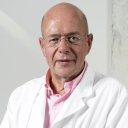
Childhood epilepsy is one of the most common disorders of the central nervous system and can occur as early as in newborns. As in adults, in children it can have different forms, with seizures seemingly appearing without any particular reason. However, in most cases, the provoking factor is a physiological condition, which should be identified in order to prescribe adequate treatment. In certain cases, pediatric epilepsy can be cured, but even patients with lifelong epilepsy have the opportunity to get rid of seizures.
Causes and specifics of childhood epilepsy
In young patients, epilepsy often results from birth trauma or abnormal brain development. Later traumatic events, inflammation of the cerebral membrane and tumors can also be the cause. If there is a family history, we are dealing with genetic character of the disease.
As in adults, seizures in children come in various forms: lasting from a few seconds to a few minutes, with or without loss of consciousness, with slight muscle twitching or as severe convulsions with rigid unnatural stretching of the torso. Freezing, staring at one point, atypical bending of the torso and flexion of the limbs - these are the various manifestations of epilepsy, which should not be overlooked by parents.
Symptoms may differ depending on age. In newborns and infants, episodes are subtle, sometimes not even attracting the parent attention: unusual eye movements and smacking, sometimes stretching the body, arm movements characteristic of rowing. Starting from three months of age, brief shudders of individual body parts appear, which are indicative of benign infantile partial epilepsy.
At the age of 2-7 years, the signs may vary even more - from brief phases of loss of consciousness to convulsive movements of the whole body.
It is important for parents and pediatricians to diagnose the symptoms of a dangerous disease in time to start with therapy as quickly as possible. The difficulty may lie in the fact that epileptic symptoms in children are often misinterpreted: short "episodes of absence" may be mistaken for daydreaming, and slight twitches may be considered as hiccups.
Impact of epilepsy on a child's mental and physical health
70% of children with epilepsy develop normally, both mentally and physically, and it has very little influence on their daily lives – both with drug support, or without it if unnecessary.
However, a symptomatic child often suffers both physically and mentally from the following possible effects:
- Difficulty concentrating. The condition as accompanied by fatigue and poor tolerance of physical and mental stress.
- Low self-esteem. Many children are embarrassed by seizures because they can not control them, which leads to a lack of self-confidence.
- Fear of possible further manifestation of the disease. For this reason, they refuse to engage in activities, including sports, despite the fact that they could do it without restrictions.
The importance of differentiating the forms of pediatric epilepsy
Since in most cases epileptic activity is the result of lesions in certain brain areas, the differentiation of the disease forms depends on their degree and size. If single areas are affected in the so-called foci, we are dealing with the focal form. In a generalized form, the entire brain is affected.
Rolandic epilepsy
Age: 2 to 14 years
Predominant gender: male
Time of symptom onset: at night
Treatment prognosis: very favorable
The name of this form is attributed to the brain lesion location, i.e. the Rolandic cortex. This is the most common type of the disease in children. It manifests itself in the form of very short sporadic attacks with facial muscle spasms, and does not always require treatment. It is one of the so-called benign, i.e. treatable epilepsies, and disappears in adolescence.
Absence seizures
Age: 5 to 8 years
Predominant gender: female
Time of symptom onset: daytime
Treatment prognosis: mostly favorable
One of the most common generalized epilepsies of childhood. It is characterized by up to 100 episodes of absences, i.e. short non convulsive seizures. The child does not lose consciousness, but does not perceive reality for a brief period. Ongoing activities (playing, talking, moving around, etc.) get interrupted for a short time, to be later resumed as if nothing has happened. Medications help to prevent this type of epilepsy in about a third of patients, and another third have symptoms until they are fully grown. The last 30% include those who have short-term episodes followed by long-term episodes over time.
Juvenile absence seizures
Age: 9 to 15 years.
Predominant gender: none
Time of symptom onset: daytime
Prognosis of treatment: moderately favorable
Patients have only a few absences per day, but often in association with severe tonic-clonic seizures. That is, first, in the tonic phase, freezing occurs, followed by rhythmic convulsive movements (clonic phase) a few seconds later. The episode lasts a total of several minutes. Drug effect is significantly lower in patients with disordered lifestyle, for example, those with insomnia, and in those who do not receive the correct therapy. In these cases, symptoms become more severe over time.
Primary reading epilepsy
Age: 17 to 18 years
Predominant gender: none
Time of symptom onset: daytime
Treatment prognosis: favorable
Seizures are provoked by reading aloud, presumably when signs (letters) are transformed into speech. They manifest as brief twitching of the tongue, jaw, lips, face and neck muscles. The disease can sometimes occur during puberty as well.
Juvenile myoclonic epilepsy
Age: 12 to 18 years
Predominant gender: none
Time of symptom onset: after waking up or during insomnia
Treatment prognosis: favorable with lifelong therapy
Typical convulsions (myoclonias) are moderate, with sudden uncoordinated movement of the arms, sometimes leg swinging. Many patients later develop seizures with mental confusion.
West syndrome
Age: 2 to 8 months
Predominant gender: male
Time of symptom onset: before falling asleep or after waking up
Treatment prognosis: unfavorable
This severe form of epilepsy, caused by malformations or brain lesions, is fortunately relatively rare, but in most cases is accompanied by mental and psychomotor retardation. The disease manifests itself as several series of combined convulsive seizures, each lasting a few seconds. These may be very fast, lightning-like jerks, occipital spasms with head tilted to the chest (looks like nodding) or torso tilts typical of Islamic greetings. A typical symptom detected by electroencephalography (EEG) is the so-called hypsarrhythmia.
Lennox-Gastaut syndrome
Age: 3 to 5 years
Predominant gender: male
Time of symptom onset: daytime, night
Treatment prognosis: unfavorable
This is another severe type of rare childhood epilepsies, accompanied by sudden seizures of different types. They are usually multiple, both tonic (strong tension of the body) and atonic (muscle relaxation), both of which are dangerous with the risk of falling. Absences - loss of consciousness episodes - are also possible in Lennox-Gastaut syndrome; their particular danger is that the child does not regain consciousness after a series of several attacks. The syndrome can affect children with or without birth trauma and structural brain abnormalities. Affected patients have severe developmental disorders.
Dravet syndrome
Age: 3 to 12 years
Predominant gender: male
Time of symptom onset: daytime, night
Treatment prognosis: unfavorable
One of the rarest and most severe inherited variants of pediatric epilepsy, leading to irreversible psychomotor disorders. Tonic-clonic seizures first appear with fever. They are later followed by uncontrollable slow muscle convulsions, and may develop into a life-threatening form. Over time, they may be joined by myoclonic seizures with rapid twitching, often triggered by temperature or light. At the age of 2-4 years, sudden death may occur.
Diagnosis and social support as tools to achievt the best therapeutic effect
Diagnostic tests for suspected epilepsy in children are the same as for adults: video and EEG recording, functional MRI of the brain aimed at detecting epileptogenic foci.
Only a few specialized facilities in Germany apply minimally invasive stereo EEG in pediatric diagnosis. With the help of robot-assisted implantation of deep electrodes into suspicious (as seen by a CT scan) brain areas, the electrical activity of the brain is detected, making it possible to make an accurate diagnosis. The aim of the study is to select the most effective therapy.
Treatment strategies for different manifestations of epilepsy have several common features. In most cases, no drug is prescribed after the first seizure, as it may turn out to happen only once. With recurrent seizures, it is important to select the first medication very carefully, since this will ensure the best treatment result. If there is no response to therapy, other medicines should be attempted; sometimes a combination of drugs is recommended.
In most cases, the same epilepsy medications are used in children as in adults. Some drugs have age restriction, but in certain cases exceptions are made.
If the main goal – freedom of seizures - is achieved, drug administration can be cancelled after a certain period of time. The decision is made by the doctor after analyzing the causes and form of epilepsy.
Surgery may be indicated if conservative management is ineffective and epileptogenic foci are limited to certain brain areas. Its goal is to remove epileptogenic lesions avoiding the risks to damage nearby structures.
One of the leading European epileptologists, the German professor Christian Elger, sets the goal of treatment in pediatric epilepsy as follows:
Severe epilepsy in children and adolescents requires comprehensive knowledge not only of epileptology, but also of neuropediatrics and social pedagogy. Contacting specialized childhood epilepsy facilities helps to achieve the best results.
References
- Dieter Schmidt und Christian E Elger. Praktische Epilepsiebehandlung. Praxisorientierte Diagnose und Differentialdiagnose, rationale Therapiestrategien und handlungsorientierte Leitlinien Gebundene Ausgabe – Thieme (1. April 2002)
- G. Wohlrab: Epilepsiebehandlung im Kindes- und Jugendalter: Kontinuität und Wandel. In: Epileptologie, 2003
- Minardi, Carmelo; Minacapelli, Roberta; Valastro, Pietro; Vasile, Francesco; Pitino, Sofia; Pavone, Piero; Astuto, Marinella; Murabito, Paolo (2019). "Epilepsy in Children: From Diagnosis to Treatment with Focus on Emergency". Journal of Clinical Medicine. 8 (1)


Comments — 0